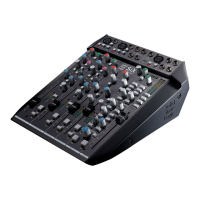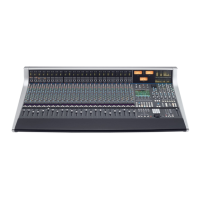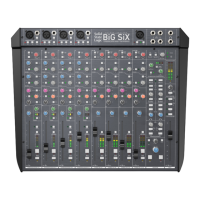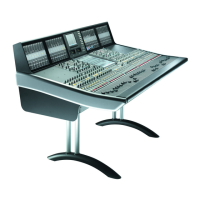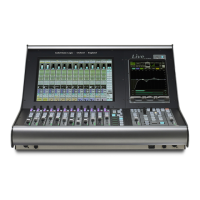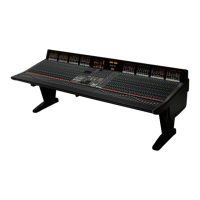Chapter 2 - Getting Started
The aim of this chapter is to familiarise you with the basics of operating your Matrix. We will restrict ourselves to simple
before exploring the references to more detailed parts of the manual.
Important Concepts
Before we get going, there are a couple of important operating principles which need to be explained:
The Master Channel
While many of the channel’s controls are located in the physical channel strip,
a number are instead found in the Master Channel (shown right) located in the
top left-hand corner of the desk’s centre section. The Master Channel gives
you access to additional channel strip controls for whichever channel strip is
assigned to it using the upper
SEL button, located above the numeric display,
in the middle of the channel (shown left).
SEL
SEL
Multiple channel strips can be assigned to the Master Channel. See Page 31 for details.
Focus Modes
Matrix combines two distinct modes of operation in one control surface, providing control of both
the analogue signals and the DAW functions associated with the modern recording environment.
In order to accomplish this within a compact space, the console can operate in two ‘Focus’
modes, focusing on either the analogue or DAW control functions. These modes are simply called
Analogue Focus and DAW Focus.
Focus modes primarily affect the channel faders and their
CUT and SOLO buttons which control
the analogue signal when in Analogue Focus mode, but send control messages to the DAW when
in DAW Focus mode. Focus modes also affect the channel meters which normally meter the
analogue signal in Analogue Focus mode but replicate the DAW track metering in DAW Focus
mode.
Matrix’s mode is selected and indicated by the large Focus button, located directly underneath
the Master Channel, on the left of the centre section (at the bottom of the graphic on the right).
Pressing this button swaps between Focus modes. It is lit to indicate Analogue Focus, and unlit to
indicate DAW Focus.
Chapter 2 - Getting Started
16
Matrix
2
Owner’s Manual
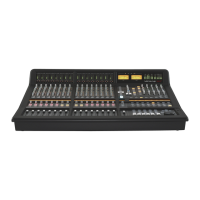
